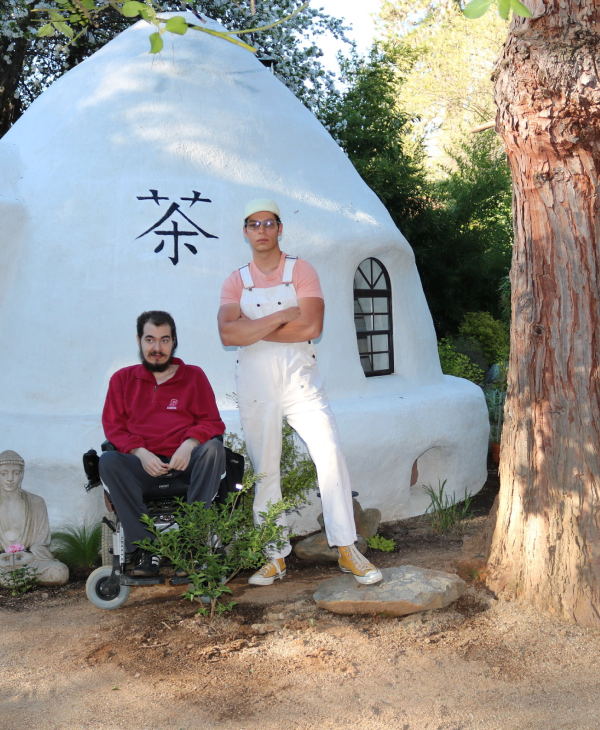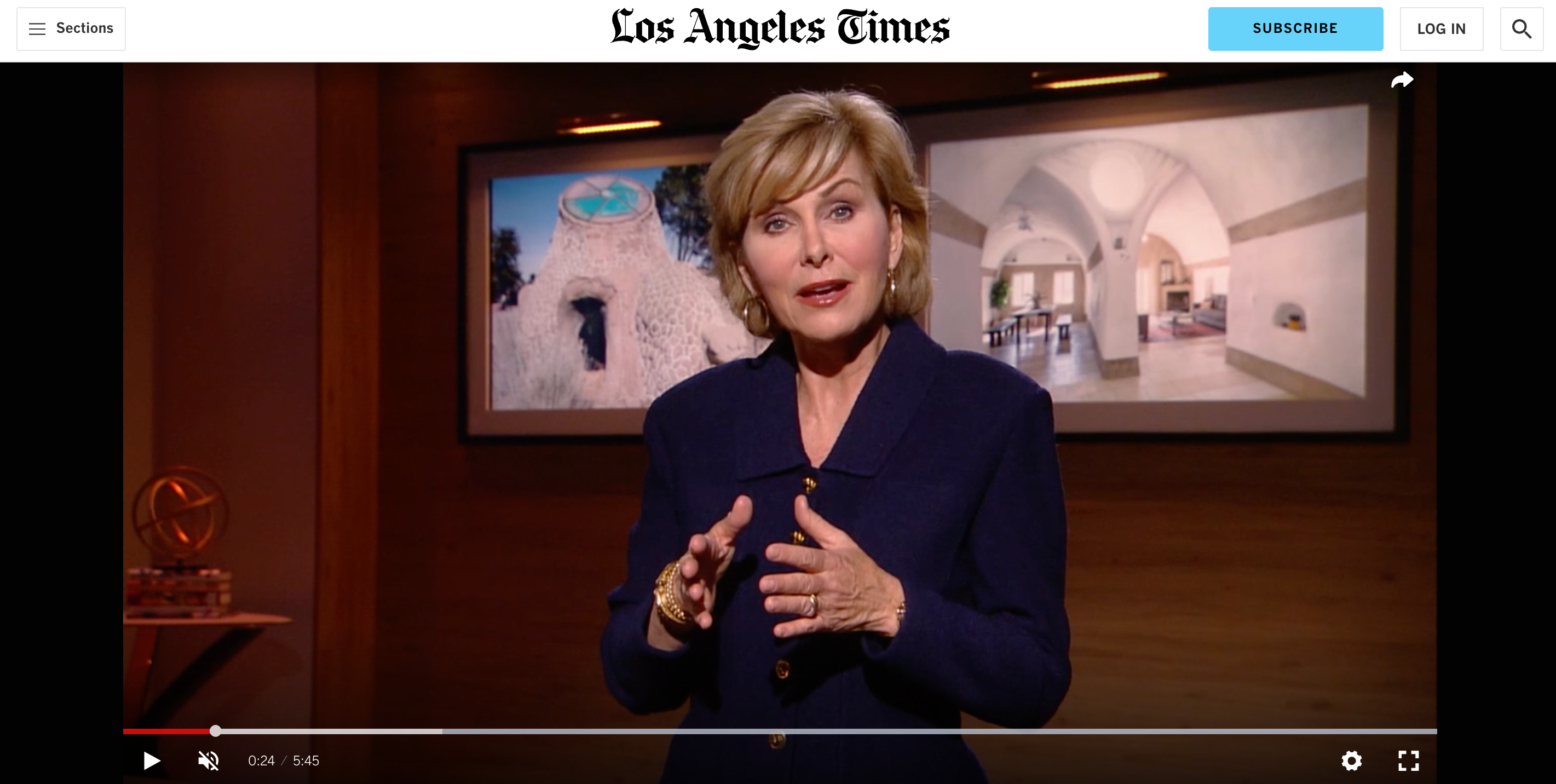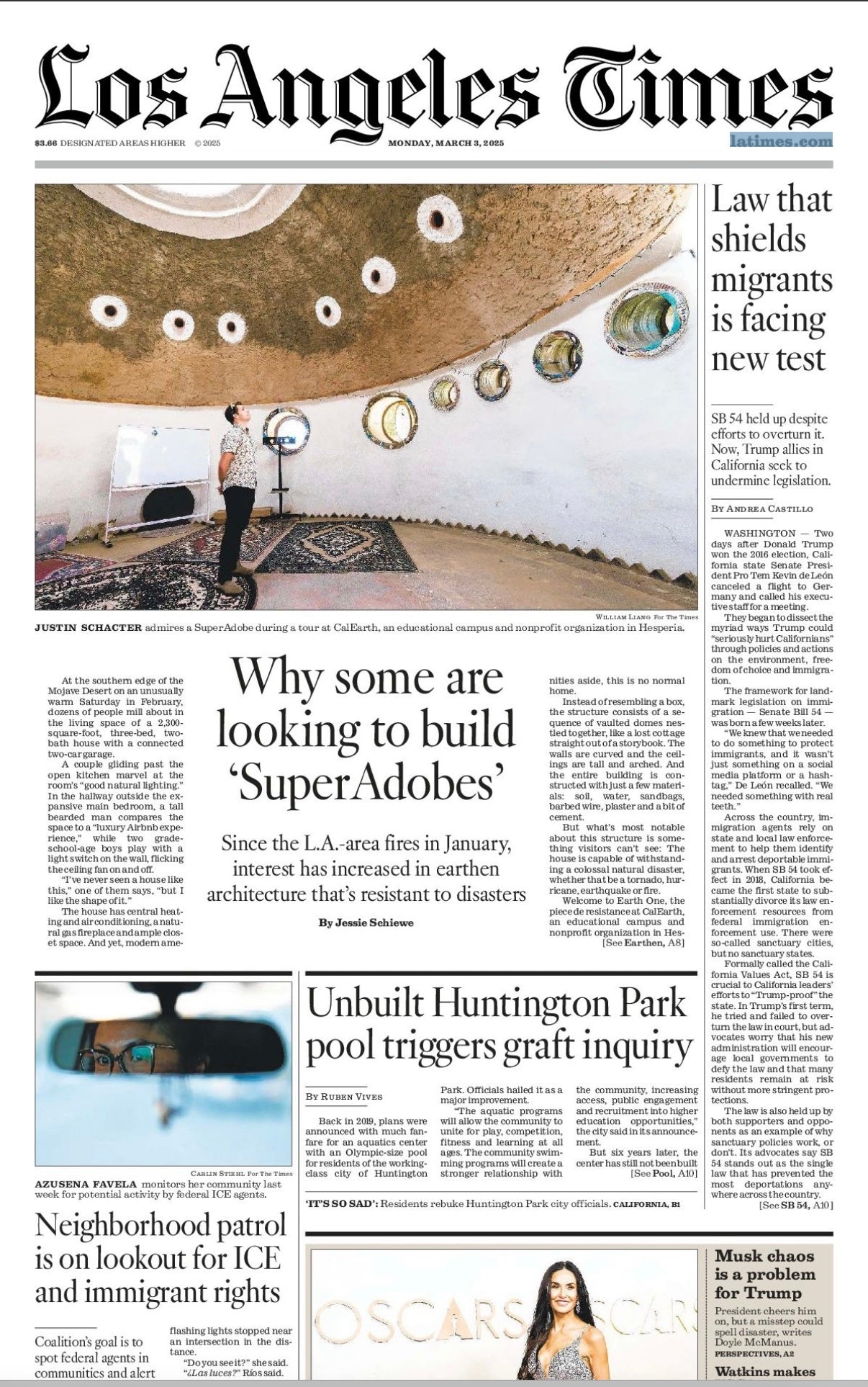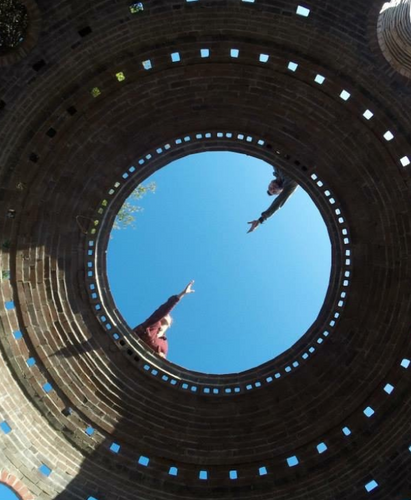How did you learn to build with SuperAdobe?
I must have read a dozen books on the subject of SuperAdobe/Earthbag building before signing up for CalEarth's long-term apprenticeship and it was during this time that I really began to notice a change within myself. I truly began developing the understanding and technique behind SuperAdobe and what a privilege that was. Fundamentally speaking, SuperAdobe is indeed a simple concept, but CalEarth taught me all of the intricacies that were not in any of the books that I had read and I certainly wouldn't have discovered them on my own.
What inspired you to learn this type of building method?
I originally discovered SuperAdobe when I was 16 years old; I am 22 now, but at that time I remember initially being attracted to the low-cost aspect of it all. The thought of being able to build my own house and to have it entirely paid off gave me a great deal of inspiration. But as I began working and learning how to build with the earth, it dawned on me that even if I had all of the money in the world, I would still build this way. There is just something so inexpressibly intriguing about it.
 Tell us about your apprenticeship at CalEarth. What did you build during the apprenticeship and what did you enjoy learning the most?
Tell us about your apprenticeship at CalEarth. What did you build during the apprenticeship and what did you enjoy learning the most?
My first CalEarth apprenticeship was in September of 2017 and our apprentice group mainly worked on Dave and Debby Walker's house. We were happy to help them turn their dreams into reality, while at the same time, learn the key concepts behind SuperAdobe. I must say that out of everything I learned at CalEarth, I really enjoyed learning the numerous little tricks in manipulating the bag as well as the barbed wire.
What do you wish the general public knew about CalEarth that most do not?
What CalEarth teaches is outwardly prodigious, and undeniably so, but what the general public doesn't see is the aspect of personal development in which every CalEarth student undergoes during their stay. Those of us who have been through Cal Earth's workshops/apprenticeships will know exactly what I am talking about. In my eyes, it is the epitome of the hero's journey.
 “Tommy’s Tea Dome;” the name alone intrigues us. Why did you build this structure?
“Tommy’s Tea Dome;” the name alone intrigues us. Why did you build this structure?
I built this dome for my brother Tommy and his main passion in life is the art of traditional tea. This dome acts as a transition from the outside world into a tea-focused environment also known as a tea house, or in this case, "Tommy's Tea Dome."
Tell us about Tommy. What does this dome mean to him?
My brother Tommy is 24 years old and suffers from Duchenne Muscular Dystrophy. He used to be able to walk, run, and function just like a normal person, but with his condition, he becomes progressively weaker over time. At this point in his life, he is permanently bound to an electric wheelchair and has few hobbies, although the hobbies he does have he is extremely passionate about, one of them being tea. I built this dome for him to take his passion of tea to the next level.

How long did Tommy’s Tea Dome take to build and how much did it cost?
Tommy's Tea Dome took roughly a year to complete although it is important to note that there were a few times where many months had gone by without any work done to the structure. After the bag work was completed, I began doing the majority of the finish work on my own, including installing electricity, plastering/rendering, installing windows and a door, building a rocket mass heater, and the list goes on. With that being said, all of these things took quite a while for me, but I did have some help at times from friends and also my mother. The cost of Tommy's Tea Dome in materials is $1,900 which includes a ceiling fan, electricity, a door, windows, a rocket mass heater, as well as the bag, barbed wire, and all of the other building materials. The labor for building the structure was done by my friends and I as well as my mother.
Did you run into any challenges while building the dome?
Thinking back, it seems to me that every step of this build was a challenge but when I walk around Tommy's Tea Dome and look at it and touch it, I think back to all of those challenging times and feel proud that we always proceeded on to the next step no matter how impossible it seemed at the time, and that is what life is all about.

Are you currently working on any SuperAdobe projects or do you have plans for future projects?
I just finished teaching a five-day SuperAdobe workshop in Northern California which was a huge success. We had twelve students from many different parts of California attend, as well as two students from out of state. It is looking like I will be teaching more SuperAdobe workshops as well as managing some other local projects all while trying to juggle my college schedule. I am very excited to see what projects come my way.
If Tommy could describe his dome in one word, what would it be?
"Wabi" (Japanese) meaning: beautiful in its simplicity - perfect imperfections





